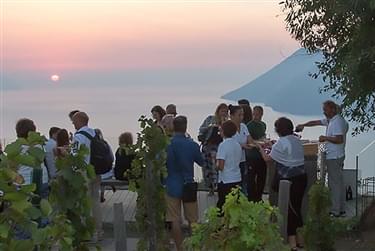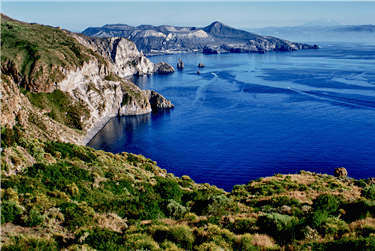Closely linked to geology, topography plays a crucial role in the concept of terroir and significantly influences the vineyard's microclimate. While large-scale weather systems have a certain predictability, these patterns can be disrupted locally by topographical features such as elevation, exposure, and slope.
Combined, these factors are essential in determining how much solar radiation and heat a vineyard receives. A moderate slope also accelerates the drainage of denser cold air from the vineyard. Water drainage goes hand in hand with altitude and slope. In the search for water, roots go deeper and absorb more trace elements from the soil, making the terroir more apparent in the final wines.
The volcanic soil, rich in pumice stones, obsidian, kaolite, and volcanic lapilli of the Castellaro plain, offers not only a wide range of locations but also many different microclimates and soils. At Tenuta di Castellaro, through careful micro-vinification, we aim to truly express all these nuances.
The island of Lipari offers a variety of landscapes and topographical features that make it unique and fascinating. Its volcanic origin is evident in the rock formations, hills, and mountains that characterize its territory, shaping not only the natural environment but also human activities, from viticulture to tourism.
Lipari features a complex and varied topography. The island is dominated by a central mountainous relief, Monte Sant'Angelo, which reaches an altitude of about 602 meters. This mountain, along with other smaller elevations, helps create a series of valleys and plateaus offering spectacular views of the sea and surrounding islands. The slopes of these hills are often covered with lush Mediterranean vegetation, including vineyards and olive groves, which benefit from the mineral-rich volcanic soil.
The coast of Lipari is equally varied, with rocky and jagged sections alternating with sandy and pebbly beaches. Another distinctive element of Lipari's topography is the presence of pumice quarries, which have created unique landscapes with white pumice mountains contrasting with the deep blue sea, creating visually striking scenes.
Lipari's topography has not only shaped its natural environment but has also profoundly influenced local culture and traditions. The hills and mountains, with their fertile soils, have enabled the cultivation of vineyards that produce high-quality wines. The cultivated terraces, the paths winding through the valleys, and the small roads connecting ancient settlements, now part of Tenuta di Castellaro, testify to a long history of adaptation and sustainable land use.
Lipari, with its volcanic hills, rugged coasts, and volcanic material quarries, creates a fascinating and diverse landscape. This variety of geographical features not only contributes to the island's natural beauty but has also shaped its history and culture, making Lipari a place of great interest for geologists, historians, and tourists.





